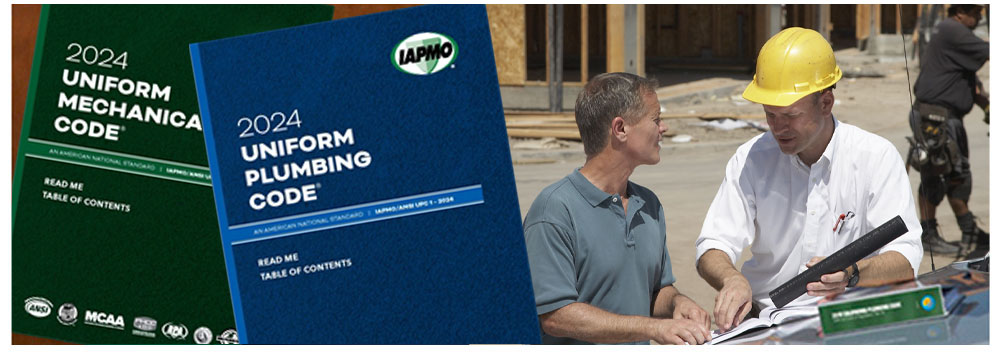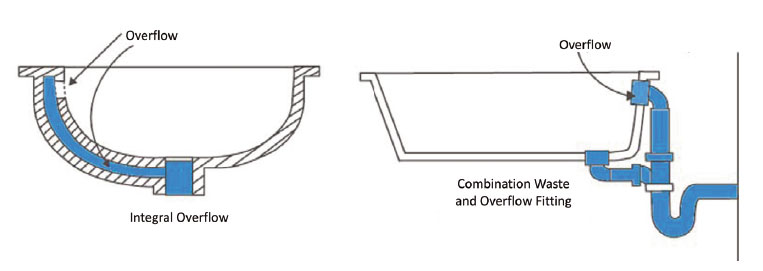June 26, 2025

From the 2024 UPC Illustrated Training Manual, Chapter 4, PLUMBING FIXTURES AND FIXTURE FITTINGS
404.2.1 Sinks, Lavatories, and Bathtubs. The waste shall be so arranged that the standing water in the fixture shall not rise in the overflow where the stopper is closed or remain in the overflow where the fixture is empty. The overflow pipe from a fixture shall be connected to the house or inlet side of the fixture trap.
When an overflow is provided, whether mandatory or optional, the fixture waste shall be so arranged that the standing water in the fixture cannot rise in the overflow when the stopper is closed or remain in the overflow when the fixture is empty. The only time water is permitted in the fixture overflow is when the fixture is filled to the point of overflow.
When waste and overflow fittings are used and are concealed, as in most bathtub installations, they must be constructed from materials approved for drainage pipe. When they are exposed or accessible, they may be of seamless drawn brass, not less than No. 20 B & S gauge (0.032 in.) (0.8 mm) in thickness, or other approved material as per Section 701.4. An overflow is not permitted to bypass the trap of the fixture it serves. It may either be an integral part of the fixture or a separate fitting (see Figure 404.2.1).

OVERFLOWS
404.2.2 Water Closets and Urinals. Overflows on flush tanks shall be permitted to discharge into the water closets or urinals served by them.
The overflow pipe from a fixture must connect only on the house or inlet side of a fixture trap except for the overflow on a flush tank. The flush tank may discharge into the water closet or urinal it serves.
From the 2024 UMC Illustrated Training Manual, Chapter 9, INSTALLATION OF SPECIFIC APPLIANCES
926.6 Venting. A pool heater listed for outdoor installation shall be installed with the venting means supplied by the manufacturer and in accordance with the manufacturer’s installation instructions. [NFPA 54:10.19.6]
A pool heater shall be located to prevent or minimize accidental harm to anyone in the area. Requirements for access, clearances, temperature and pressure-limiting devices shall be as described in this section. In no case shall a pool heater be located with less than the required clearance or interfere with combustion air, draft hood, vent termination and relief or accessibility for servicing.
A pool heater, installed with an over-temperature device in the outlet line of the heater that may restrict the flow to the pool, requires a pressure-relief valve to be installed upstream of the device.
A pool heater listed for outdoor installation shall be vented according to the manufacturer’s instructions and Chapter 8.
(This is not to be considered the official position of IAPMO, nor is it an official interpretation of the Codes.)

IAPMO
IAPMO develops and publishes the Uniform Plumbing Code®,the most widely recognized code of practice used by the plumbing industry worldwide; Uniform Mechanical Code®; Uniform Swimming Pool, Spa and Hot Tub Code®; and Uniform Solar Energy, Hydronics and Geothermal Code™ — the only plumbing, mechanical, solar energy and swimming pool codes designated by ANSI as American National Standards — and the Water Efficiency Standard (WE-Stand)™. IAPMO works with government, contractors, labor force, and manufacturers to produce product standards, technical manuals, personnel certification/educational programs and additional resources in order to meet the ever-evolving demands of the industry in protecting public health and safety.
Last modified: June 25, 2025
